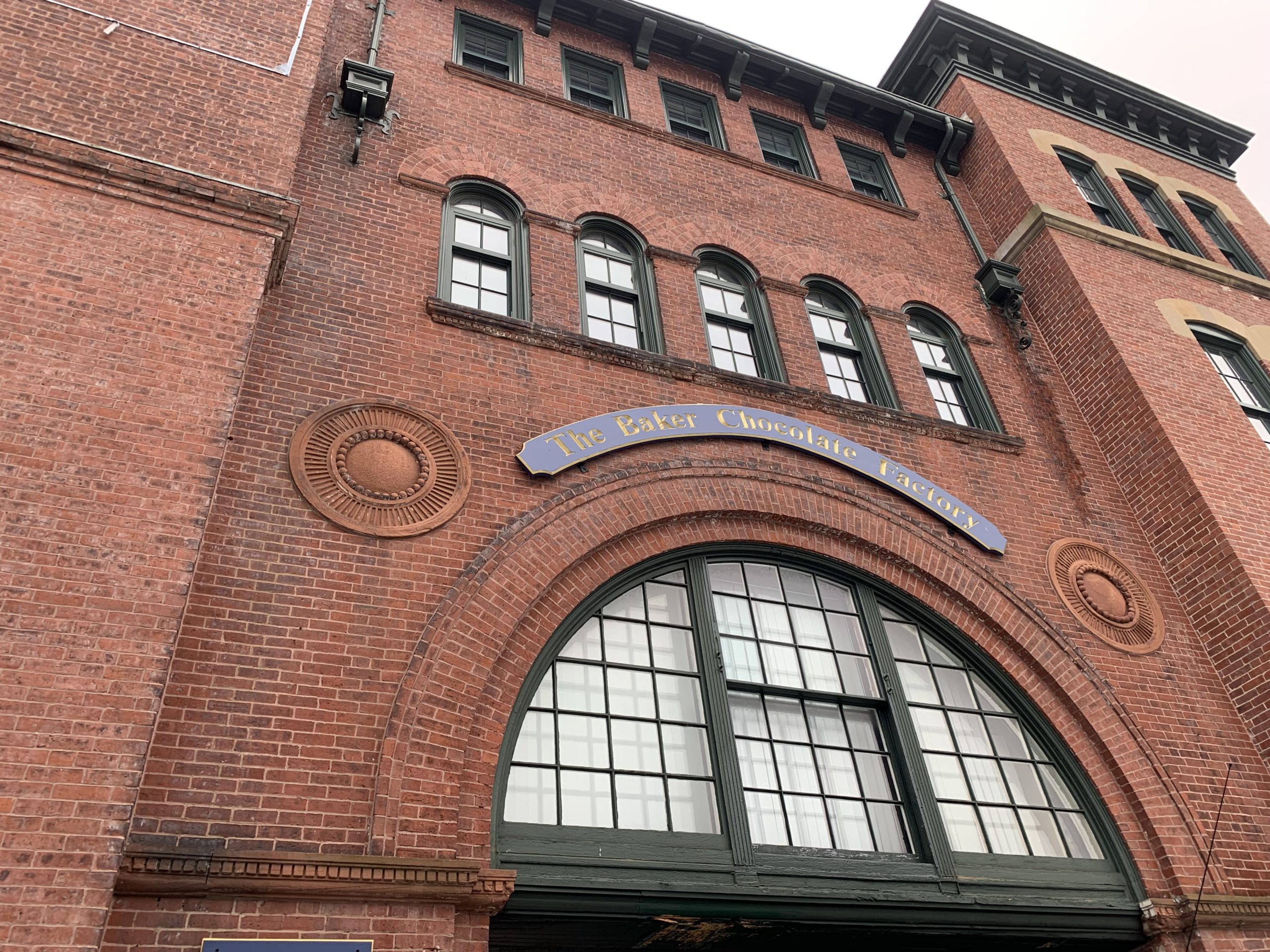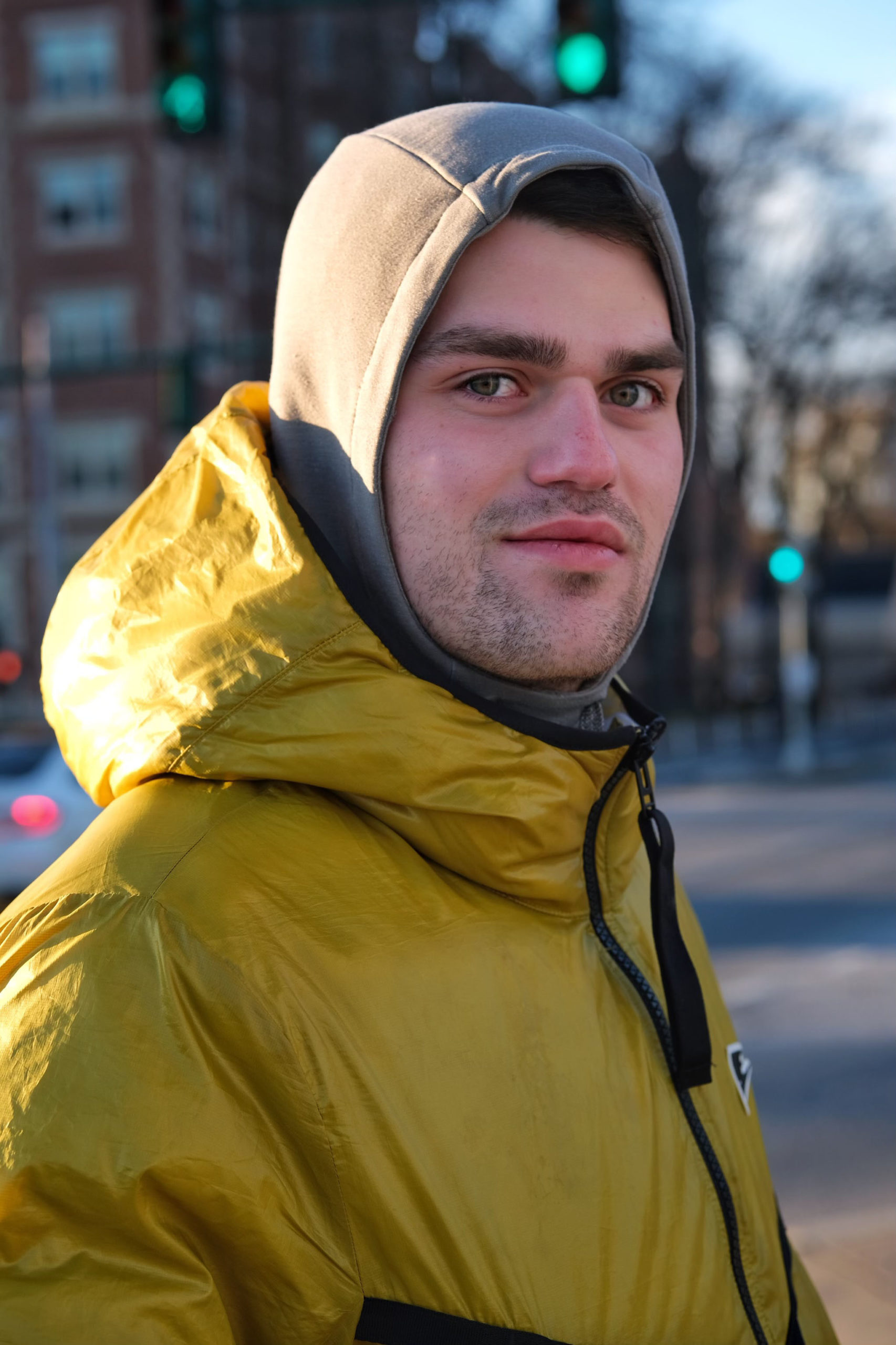So tradition goes, Dr. James Baker, a Harvard University graduate and Dorchester resident, spotted a man sobbing on the bank of the Neponset River in 1765. Playing upon his genuine concern, he made his way down the river bank, where he struck up a conversation with the man. Little did Dr. Baker know, his compassion for a stranger would lead to the establishment of the Baker Chocolate Company; eventually the largest manufacturer of chocolate in 19th century America.
From chance encounter to chocolate
In Europe during the mid-1700’s, chocolate shops were widely popular throughout colder months for serving hot chocolate. Around this time in the United States, chocolate wasn’t a heavily imported commodity, however it was desired by the elite, of course, for its rich taste.
The man on the river bank was an Irish immigrant named John Hannon. Besides his impoverishment, he revealed he was a skillful chocolate maker, having learned in England.
Wasting no time, Baker agreed to financially support Hannon, so long as they entered a business agreement that saw the Irishman crafting his specialty recipe. And with that, America’s first chocolate mill began operation in 1765. The Neponset River provided the water power necessary to manufacture chocolate at the factory. Today, the historic mill is on Adams Street in Dorchester Center.
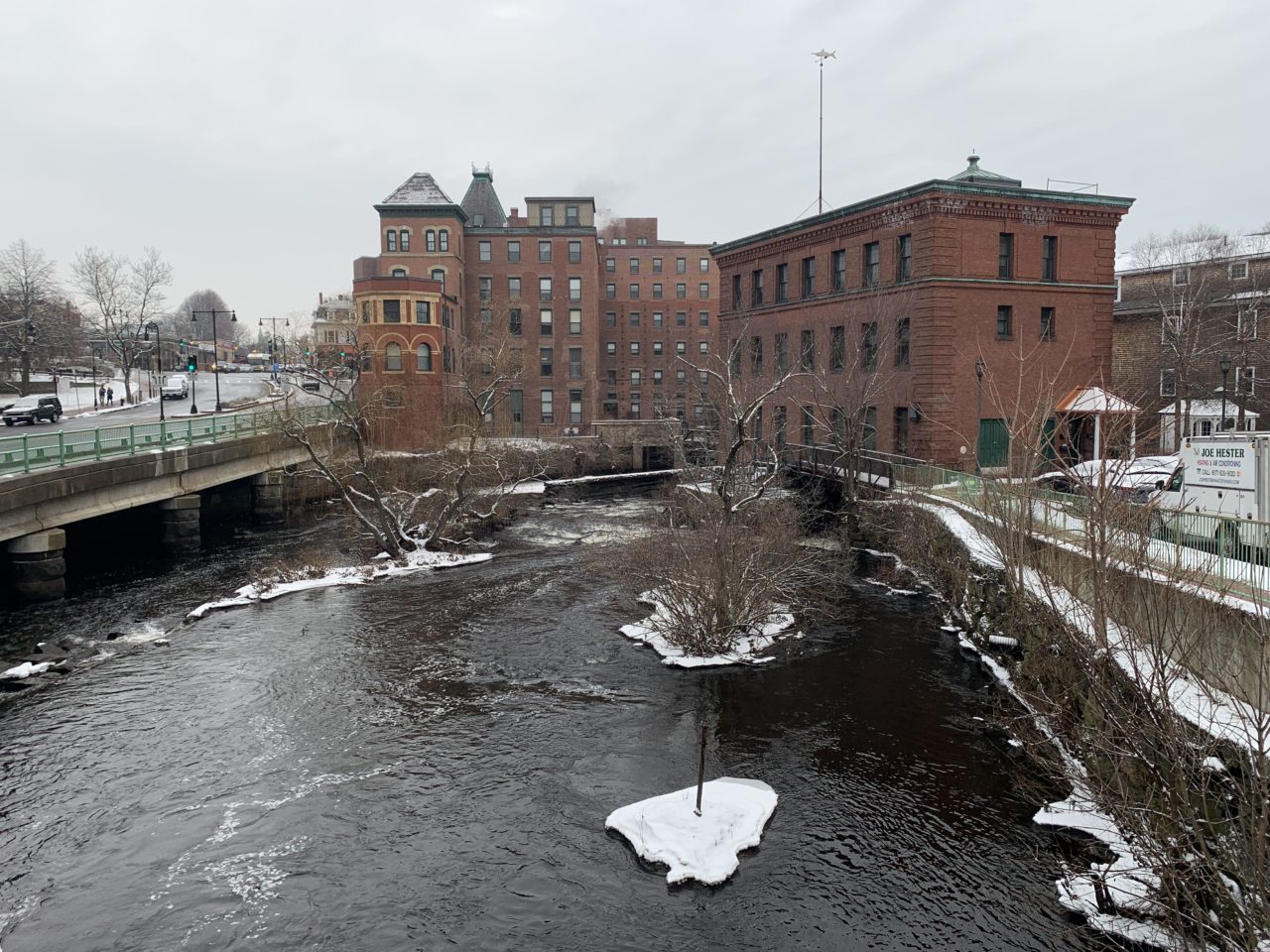
From 1765 to 1779, John Hannon was responsible for making the chocolate. In 1779, Hannon embarked for the West Indies in search of additional cacao bean sources but mysteriously disappeared en route to his destination. Only a year following his disappearance, Hannon’s widow sold her deceased husband’s share of the business to Dr. James Baker, and thus, the Baker Chocolate Company was established in 1780. Baker Chocolate was known for its high quality, uniform consistency, which was evident in their money back guarantee policy if the product did not live up to the company’s standard.
Creating a household name
Baker Chocolate Company became a family business when Dr. James Baker’s son, Edmund, partnered with his father in 1791. In 1804, Edmund Baker followed in his father’s footsteps, becoming the owner, and partnering with his son, Walter, in 1818. Walter would eventually go on to own the business from 1824, renaming his business “Walter Baker & Company.” When Walter died in 1852, the chocolate company fell into the hands of Walter’s brother-in-law, Sydney Williams, who only assumed the role for two years until passing away in 1854.
Henry Lillie Pierce was first hired as a Baker Chocolate Company clerk in 1849, making a meager three dollars per week. Within two years, he was appointed manager. After the untimely death of Williams, Henry L. Pierce was permitted to lease the Baker Chocolate Company from the Baker Estate, serving as president from 1854 until his death in 1896. Pierce was ultimately responsible for the expansion of the business’s reach, growing to 40 times its original scope. The key to the tremendous growth of Walter Baker & Company was Henry Pierce’s domestic and international marketing strategy.
During the 1850’s, Walter Baker & Company held exhibits showcasing their chocolate in New York, Philadelphia, Baltimore and Cincinnati, as well as outside the country, in England.
Their chocolate won the highest honors at the 1867 Paris World’s Fair, the 1873 Vienna World’s Fair and the 1876 Philadelphia World’s Fair, with roughly 11 million, 7.25 million, and 10 million visitors, respectively. People flocked from across the world to these incredibly large, eclectic displays of modern innovation. Anybody, from average citizens to United States presidents, and even emperors, marveled at the spectacle.
The 1893 Chicago World’s Fair had the largest impact on Walter Baker & Company — nearly 27 million people attended over a six-month period. For this event, their temporary two-story white marble exhibit cost 60,000 dollars at the time, which, accounting for inflation, equates to almost 2 million dollars today.
The Austrian Empire Prince, Dietrichstein, visited Vienna in 1760, where he entered one of the many chocolate shops throughout Europe. He was so struck by the beauty of the domestic servant carrying his hot chocolate that, in addition to marrying her, he hired Swiss artist, Jean-Etienne Liotard, to paint a portrait of her. The pastel portrait would be known as The Chocolate Girl.
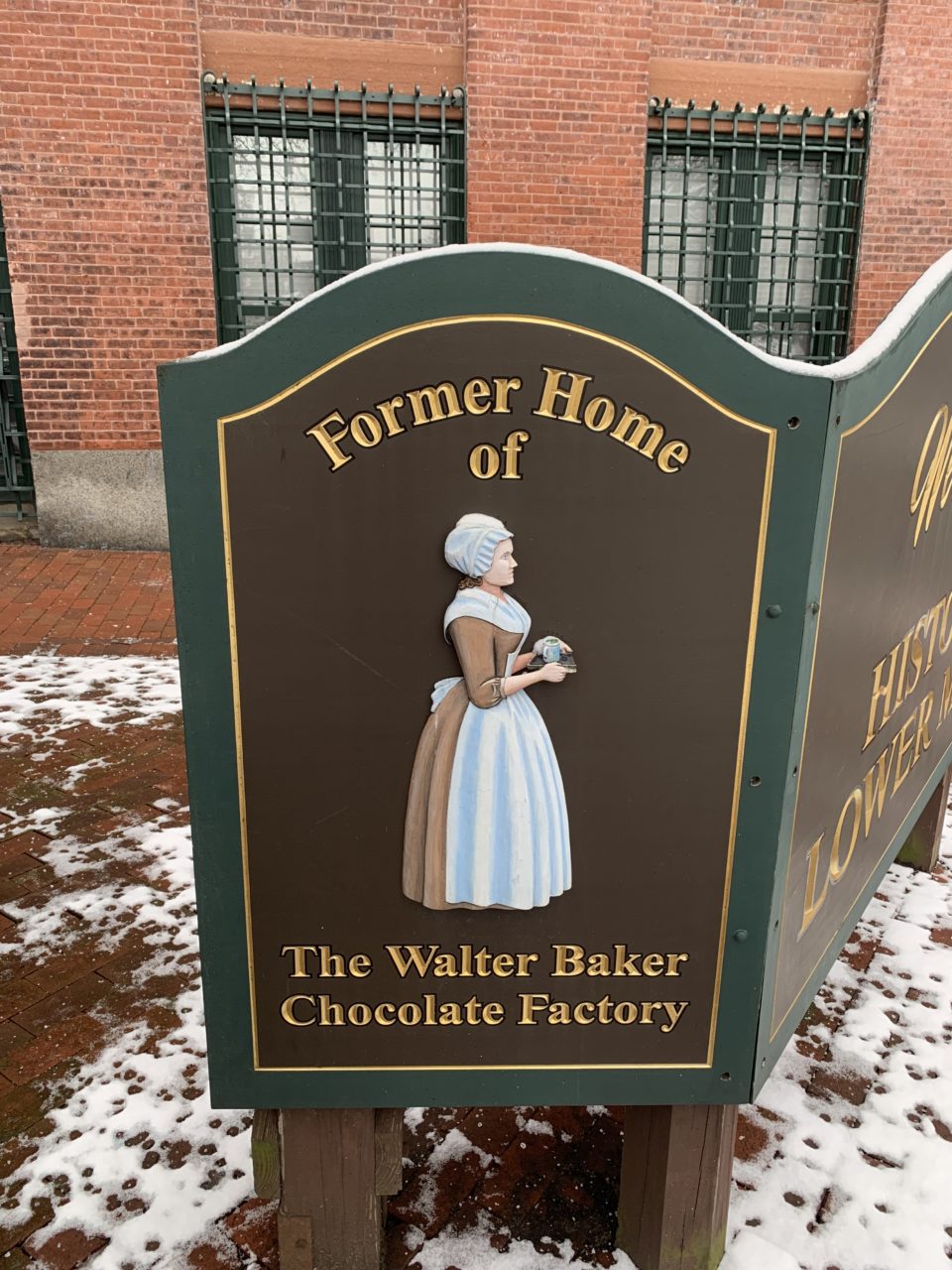
In 1862, Henry Pierce came across the pastel painting, and requested a copy be made for the Walter Baker & Company offices in Dorchester. The copy would become a trademark of the brand, known and marketed as the company’s signature La Belle Chocolatiere. Women dressed in silk gowns and aprons were spokespeople and demonstrators for the company’s exhibits around the world. Whether it was explaining the science behind the chocolate manufacturing process, handing out samples, or holding cooking classes for all, those playing the La Belle Chocolatiere character were integral to the company’s image.
Choice Recipes was a free, annually printed cookbook sent to customers beginning in 1870. What started as a short, unillustrated booklet turned into a 60 page recipe book with colorful, intricate illustrations. Using Walter Baker & Company chocolate products along with the cookbook made a variety of fudge, chocolate éclair, chocolate oysterette, chocolate jelly, and chocolate charlotte accessible to the general public.
The Impact of Henry Lillie Pierce
Although a fierce competitor, Henry L. Pierce was held in high regard. Besides being elected to the Massachusetts House of Representatives from 1860 to 1862 and 1866 to 1868, as well as serving in the 43rd and 44th Congresses from 1873 to 1877, Pierce was elected mayor of Boston in 1872 and 1877. His will allocated funds gifted to Harvard University, at the time the largest in the institution’s history, and set aside equal sums to the Museum of Fine Arts, Massachusetts General Hospital and Massachusetts Institute of Technology. Also, he demanded his estate pay $100 to every employee of his company, equivalent of $3,000 today.
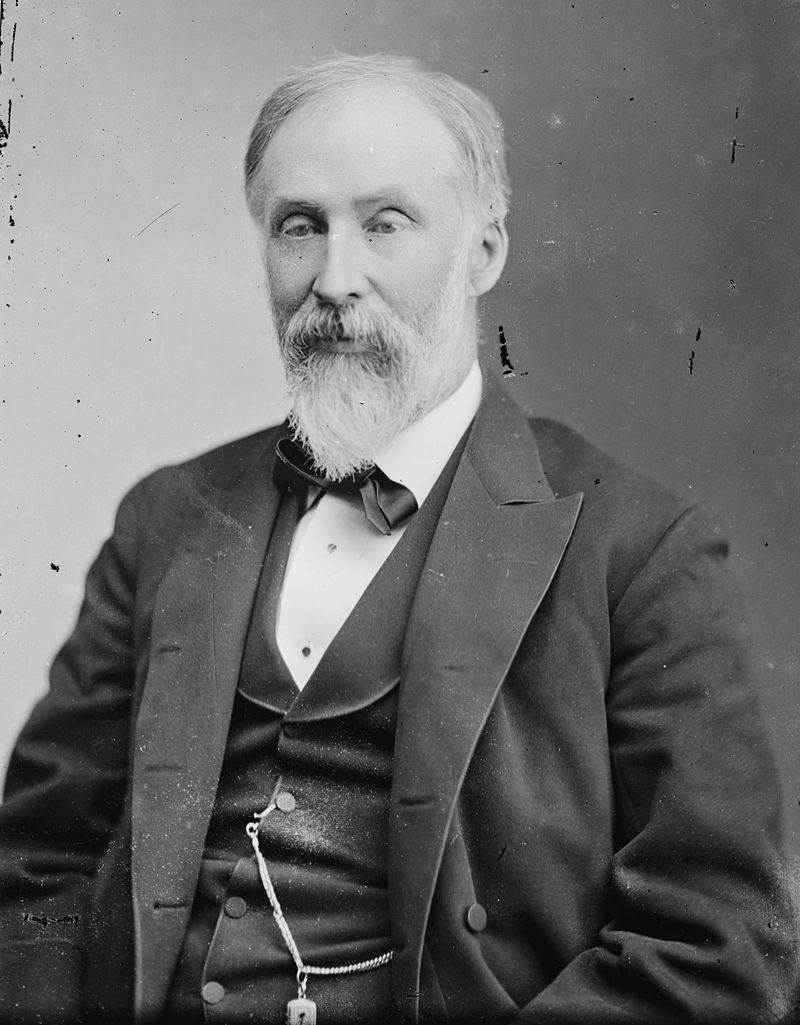
From opening the first chocolate factory out of a single leased mill to becoming the most prominent American chocolate manufacturer of the 1800s, the Baker Chocolate Company is forever cemented into American chocolate history. Twenty-four million cacao beans were imported into the United States in 1893, whereas 275 million pounds of cacao beans were imported in 1921. It could surely be argued the Baker Chocolate Company played a pivotal role in such an explosive increase.
References
World’s Fair:
- https://omeka.wlu.edu/wluparis/items/show/83 (1867 Paris)
- https://www.bie-paris.org/site/en/1873-vienna (1873 Vienna)
- https://www.lcpimages.org/centennial/ (1876 Philadelphia)
The Chocolate Girl:
Inflation Calculator:

